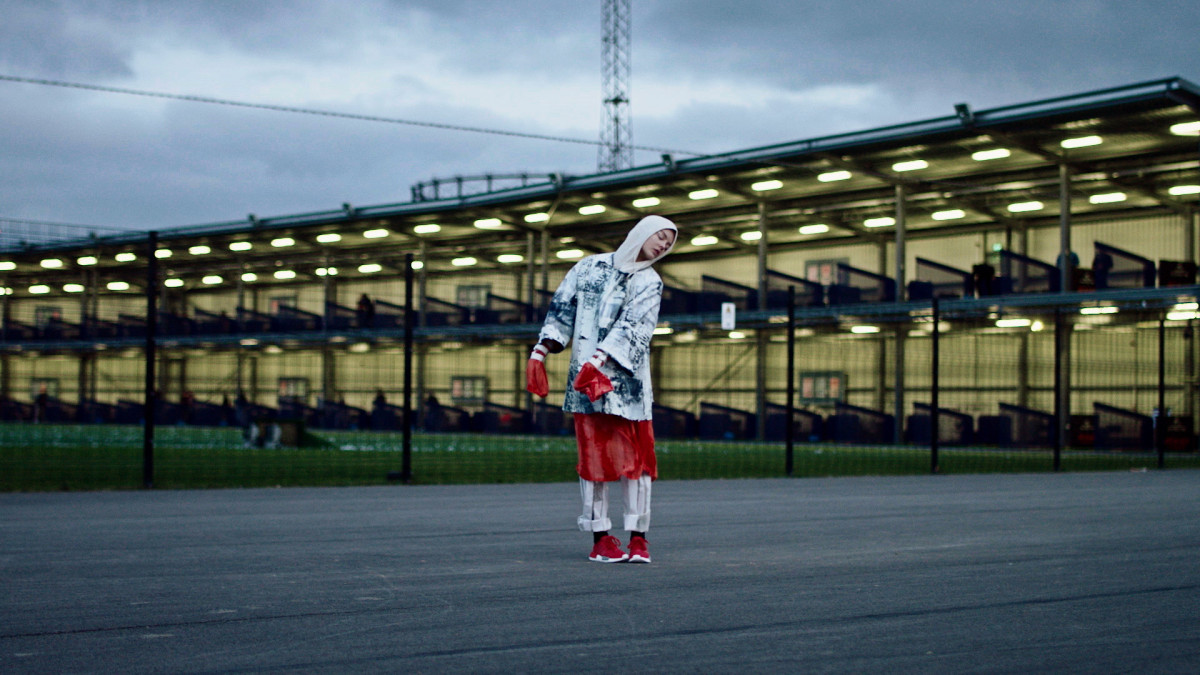
New Babylon
Adidas Originals released its new sneaker, called ‘nomad’, on March 17th 2016. In collaboration with Ash Magazine, they asked creative people – artists, photographers, illustrators and filmmakers to create a piece on the subject of ‘urban nomadism’.
Urban nomadism can be understood in different ways, from the homeless to the young, global, restless creative. In the past decades a new form of nomadism has evolved. Through gentrification, bad regulations and mammonism, a lot of people are forced by financial pressure to move to another area in a city every six months or so. These circumstances, where the tent has been replaced by a temporary flat, can be seen as new forms of nomadism, although most of the people wouldn’t call themselves nomads. Through this constant insecurity, an ever growing gap between the rich and the poor, the growth of so-called megacities and the constantly changing job situation, more people urge the need for a new form of freedom.
Between 1959 and 1974, visual artist Constant Nieuwenhuys perceived and designed a city called “New Babylon” as a future potentiality. Architectural critic Sarah Williams Goldhagen explains that the goal was the creation of alternative life experiences.
“[…] In the New Babylon, the bourgeois shackles of work, family life, and civic responsibility would be discarded. The post-revolutionary individual would wander from one leisure environment to another in search of new sensations. Beholden to no one, he would sleep, eat, recreate, and procreate where and when he wanted. Self-fulfillment and self-satisfaction were Constant’s social goals. Deductive reasoning, goal-oriented production, the construction and betterment of a political community–all these were eschewed.”
As Constant Nieuwenhuys himself wrote: “It is obvious that a person free to use his time for the whole of his life, free to go where he wants, when he wants, cannot make the greatest use of his freedom in a world ruled by the clock and the imperative of a fixed abode. As a way of life Homo Ludens [Nieuwenhuys’ new homo sapiens] will demand, firstly, that he responds to his need for playing, for adventure, for mobility, as well as all the conditions that facilitate the free creation of his own life. […]”
We see a dystopian future where tribes of urban nomads wander through the street canyons. Marked by the digital age, they search for a new spiritual world. We see them perform a new dance. A rite to conjure their utopia. A new world, in which we give up our predefined life to obtain a new way of freedom.
Creative Direction & Visual Effects
Builders Club
Jonas Hegi & Julien Simshauser
Weblog
Rolex Uhren: Darum sind sie nach wie vor angesagt
Was tut sich im Online-Marketing 2024?
Mit einer cleveren SEO die Sichtbarkeit im Netz erhöhen
Moderne Heizsysteme: Welche Heizungsanlagen versprechen die größte Energieersparnis?
Die Qual der Wahl – Erfolg im Internet – die Auswahl der Webagentur
Entdecke die neuesten Trends in Damenmode: Stilvoll und zeitlos
E-Mail-Outreach betreiben: Die besten Tipps, um effektiv Entscheider zu erreichen
Werbebotschaften – der Motor für den Verkauf
Webdesign – was müssen Unternehmen beachten?
Welche Werbe- und Designtrends sind für 2024 zu erwarten?
Limitierte Editionen: Das Phänomen von exklusiven Sneaker-Veröffentlichungen
To-go-Verpackungen mit Persönlichkeit
Die Vorteile eines eigenen Website-Servers: Das sind sie
Das richtige Produkt im Netz finden: Die Welt der SEO-Agenturen
Windows für Mac-Liebhaber: Die besten Tipps im Umgang
Ein praktischer Leitfaden für Marketer, die KI nutzen wollen
Chaotisches Genie oder einfach schusselig? Fünf Tipps für den besseren Merker
Nachhaltige Etiketten drucken: Worauf muss man achten?










